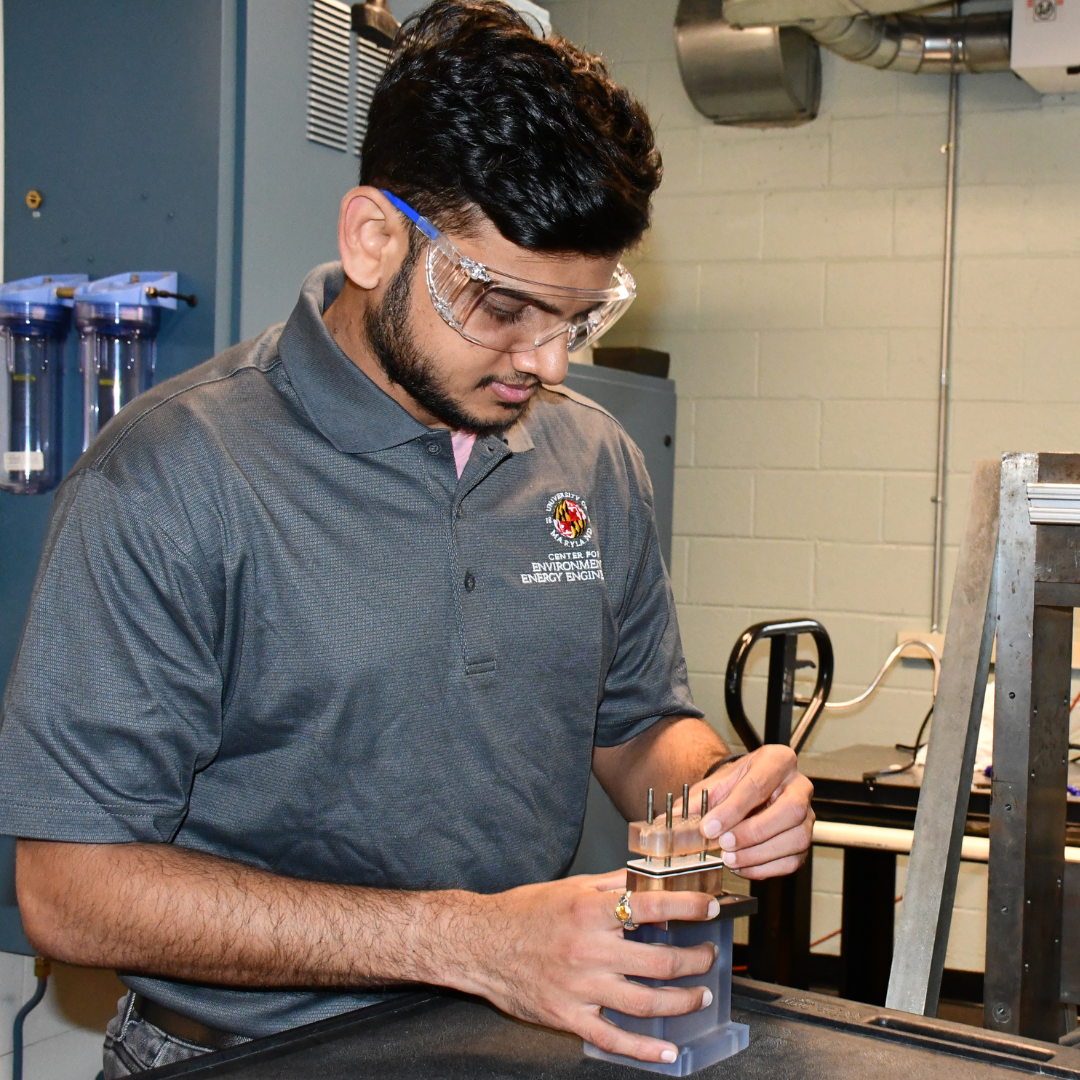News Story
Microgravity Pool Boiling Experiment Upgraded to 'Flight Definition' by NASA
An experiment by Professor Jungho Kim and students John Benton and Bob Kucner of the Phase Change Heat Transfer Laboratory to study subcooled pool boiling of FC-72 has been upgraded to "flight definition" by NASA. This means that it has a good chance to fly on the International Space Station. The experiment was recently upgraded from a ground-based to a flight experiment. The scheduled launch date is September 2004.
Boiling as a heat transfer mechanism is of importance to space based hardware due to the large amounts of heat that can be removed with little increase in temperature. Because boiling is strongly affected by buoyancy, the nature of boiling in microgravity environments is significantly altered. An understanding of the effect of this environment on boiling mechanisms is critical to the proper design of heat removal equipment for use in space-based applications. If boiling can be used reliably to transfer energy in space, this would lead to heat exchangers that are greatly reduced in size and weight, leading to lower payload launch costs (currently at $10,000 per pound).
Dr. Kim and members of the Lab have been performing experiments to determine boiling mechanisms in microgravity using a KC-135 plane (popularly known as the “Vomit Comet”) that provides microgravity environments for short (20-25s) periods of time.
This work is sponsored by the NASA Microgravity Fluid Physics Program
Published February 15, 2001









